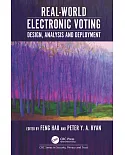In Public Goods, Public Gains, Link and Scott discuss the systematic application of alternative evaluation methods to estimate the social benefits of publicly-financed research and
development (R&D). The authors argue that economic theory should be the guiding criterion for any method of program evaluation because it focuses attention on the value and the opportunity
costs of the program.
The evaluation methods discussed and illustrated are both economics and, for comparison, non-economics based.
The book is motivated by four foundation chapters that discuss government's role in innovation from the perspective of economic theory, review public accountability issues from both a
constitutional and an historical perspective, overview systematic approaches to program evaluation, and describe the evaluation metrics typically used. Four case studies illustrate the four
alternative evaluation approached discussed. These case studies are for the U.S. Advanced Technology Program's intramural research awards program, the U.S. National Institute of Standards and
Technology's research on wavelength references for optical fiber communications, the U.S. Malcolm Balridge National Quality Award, and the Advanced Technology Program's focused program on the
integration of manufacturing applications.





















